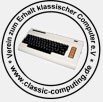Hello!
I know that's not exactly a P2, but some of you may be able to help me.
Last Friday I received my P3 system. rfka01 had already told me that it was failing (and also said the PSU could be dead). That's what happened and what I did:
- Day 0 (Friday): Reception.
- Day 1 (Saturday): Access to the backplane, document board positions. Capacitors tested, CRTC+KB board was found shorted.
- Day 2 (Sunday): Defective capacitor on CRTC+KB board replaced.
- Day 3 (Tuesday): First test, without floppy drives. The computer was found working (including PSU), except for CAAC09 (48KB DRAM), which was found shorted.
- Day 4 (Wednesday): Capacitors C25, C34, C45 on the RAM board were replaced.
- Day 5 (Thursday): Second test, with floppy drives. The computer kept resetting itself whenever CAAC09 was connected. Eventually it was replaced with CAAC01 from the Italian P2, with the same results (CAAC01 is known to having been repaired, tested and working). When the 48KB RAM board was not present the computer would turn on and MOS would prompt "RESET4001-4000" and "CAAP-3602 1B76 4000 40FF". The drives would spin without interruption, even when opened and their LEDs never turned on.
What I found different between P2 and P3 memory boards is a greater usage of Slot C pins (on P2 48KB cards they weren't used, at least on the revisions I have). I imagine this was made to remove redundant hardware (address decode logic) and made possible the fusion between the CRTC board and the keyboard controller in a single part. Am I wrong?![]()
This time and first since I collect I have recorded tests on days 3 and 5. I'll revise the footage when everything is done and think if it's worth editing. ![]()
Thank you very much,
Jaume

